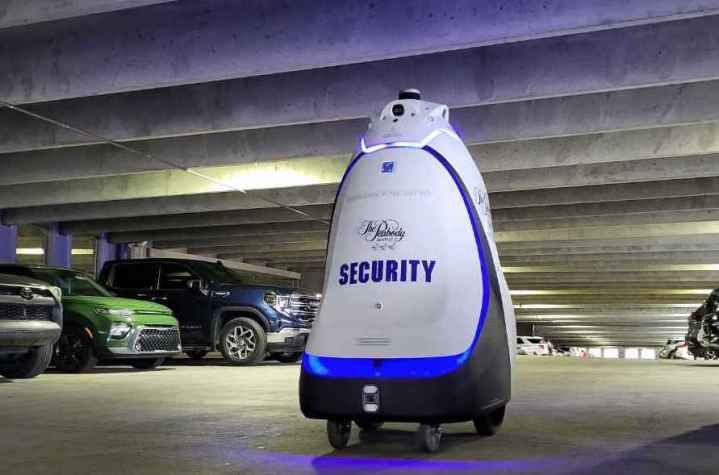
San Antonio International Airport in Texas is deploying a 420-pound autonomous robot to bolster its security operations.
The 5-foot-4-inch K5 robot, built by California-based Knightscope, will be rolled out in the next couple of months.
K5 is equipped with a 360-degree camera and multiple microphones to monitor its surroundings. Still, its top speed of just 3 mph and its inability to handle stairs means that it will be used mainly for monitoring rather than chasing down suspected criminals.
Specifically, K5 will “keep an eye on doors in parts of the airport that the public doesn’t have access to,” according to local media outlet San Antonio Express-News.
Alarms sound when these doors are opened accidentally or inappropriately. In such cases, the robot will check the badge of the person opening the door, with the information then transmitted to airport security personnel, who will confirm whether the individual has access permissions and then act accordingly.
Local City Council member Jalen McKee-Rodriguez voted against K5’s deployment, saying that its presence “raises concerns about privacy, surveillance, and racial profiling … That’s a foundational concern I have with these types of robots and devices,” local news site Ksat.com reported.
But San Antonio director of airports Jesus Saenz Jr insisted that K5 “is not going to be utilized for surveillance, in no purposes whatsoever. This is not to surveillance individuals. This is a response to door alarms that occur at the airport.”
Knightscope’s K5 recently completed a trial deployment in New York City in an effort led by Mayor Eric Adams. Lasting less than a year, the trial involved the wheel-based machine patrolling Times Square subway station, but in the end, the robot had to be chaperoned by human officers after some passers-by tried to abuse it, the New York Times reported.
But now it sits “motionless like a sad Wall-E … gathering dust inside an empty storefront within New York City’s busiest subway station,” the Times said. Hopefully, the same fate doesn’t await K5 at San Antonio airport.


